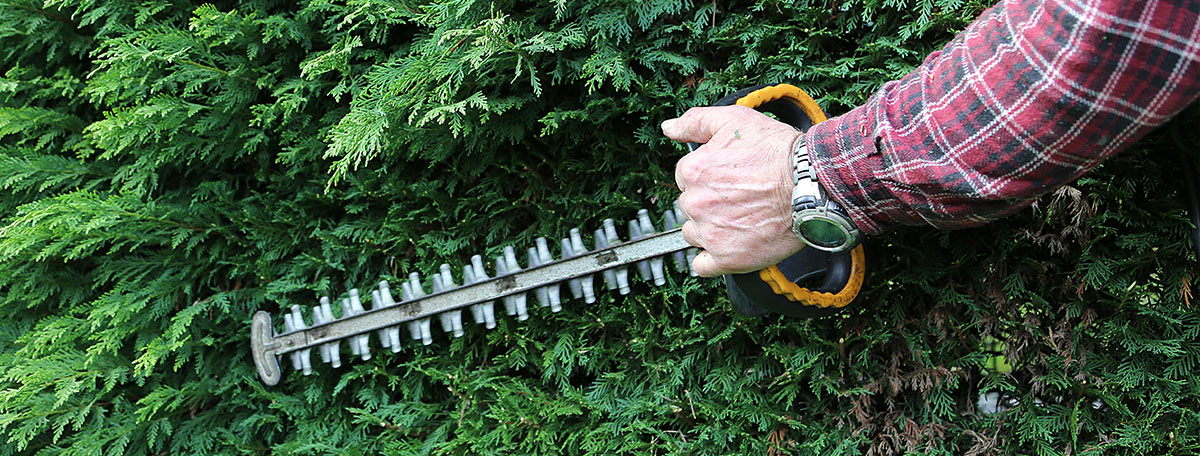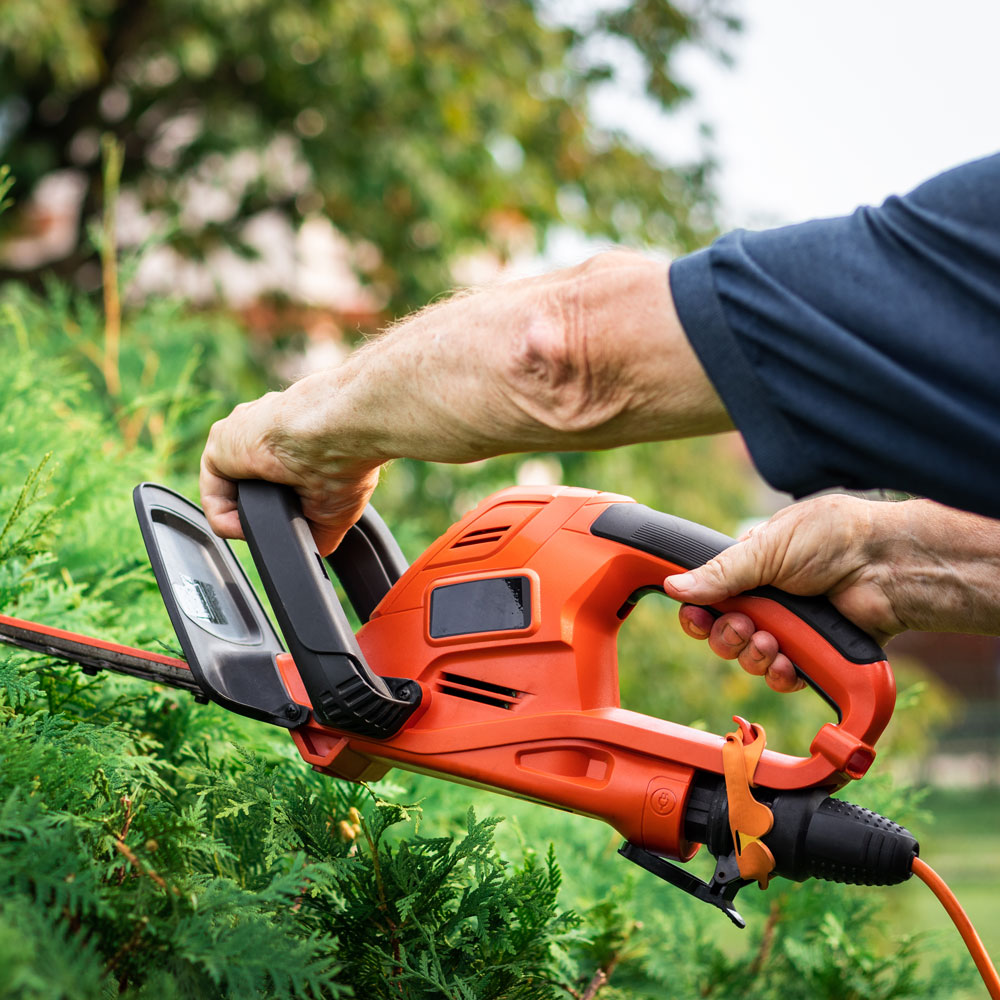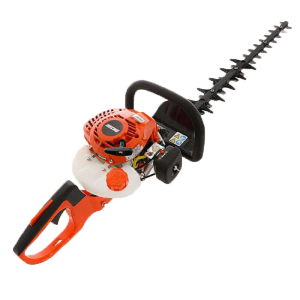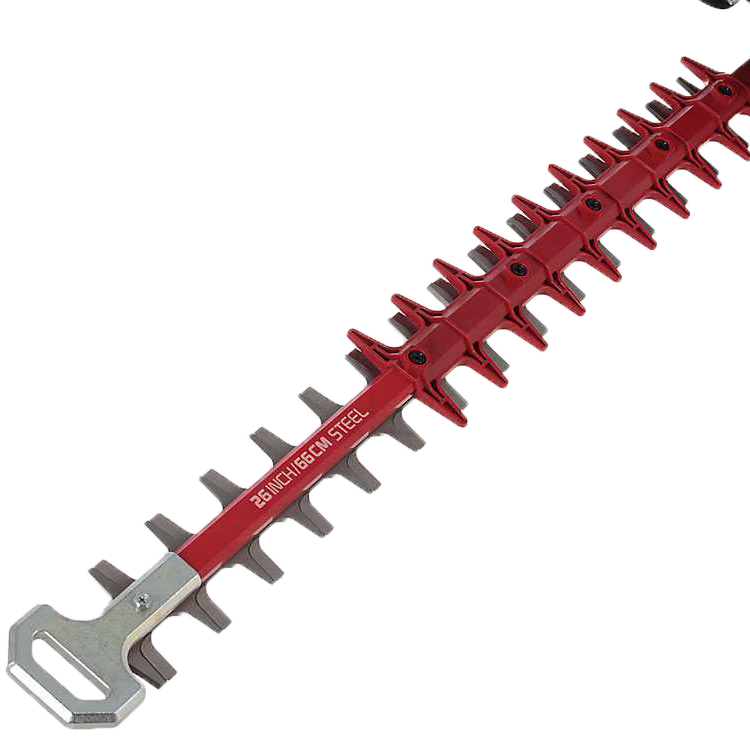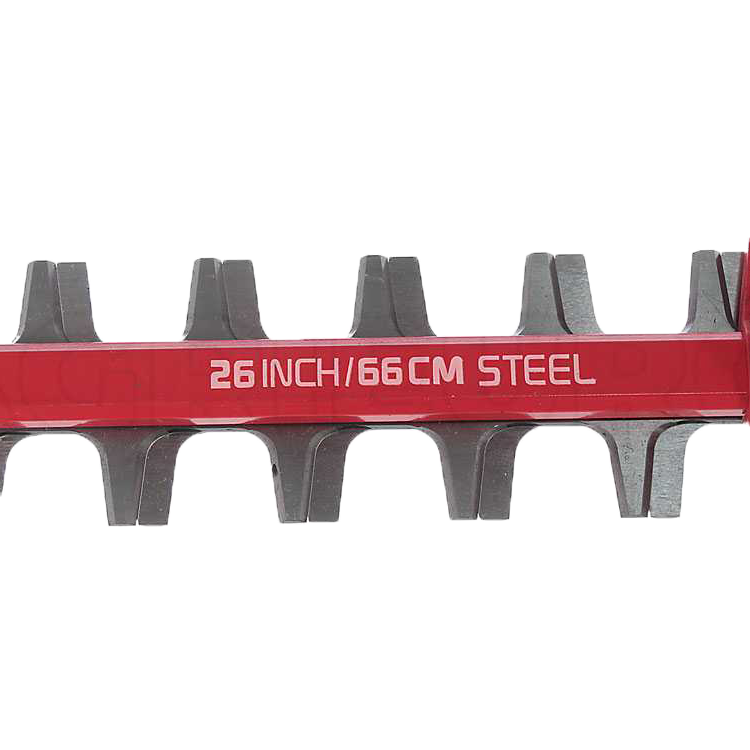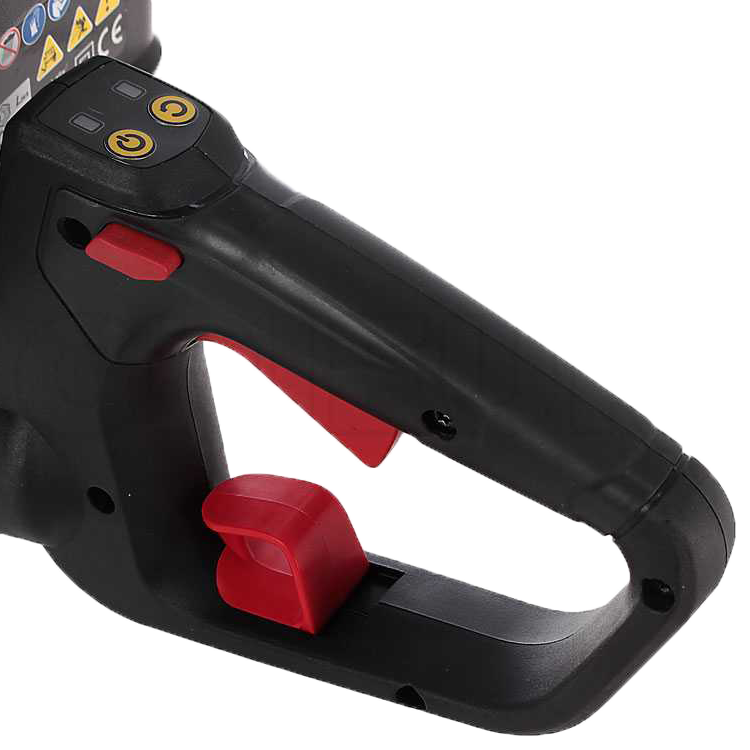A comprehensive guide to purchasing the best hedge trimmer, with lots of information and tips on how best to use it.
The Complete Guide to help you choose the Best Hedge Trimmer
by the Real Experts of Pruning Equipment
A hedge trimmer is one of the most important tools to take care of one’s own garden. Regular pruning of hedges and shrubs is essential for healthy and flourishing plants. In many situations, the use of chainsaws and pruning shears can be time-consuming and give unsatisfactory results, not to mention the fact that resorting to a professional gardener is not the cheapest option either. This is why the purchase of a hedge trimmer happens to be the best choice for pruning the hedges, taking care of your green space, and keeping your plants in good health in total autonomy. However, there are many different types of hedge trimmers on the market and choosing the right model for your needs is no easy task: with this guide we will try to help you choose and purchase the best hedge trimmer for your work requirements.
CONTENTS
1. Introduction
The hedge trimmer is the main tool for taking care of the plants in your garden. Its basic function is to give a clean and accurate cut to the hedges and shrubs in your green space. Choosing the best hedge trimmer for your work needs is not easy, as there are many different types on the market. The large family of hedge trimmers is divided into 3 major groups:
- 2/4-stroke hedge trimmers,
- electric hedge trimmers,
- battery-powered hedge trimmers.

2/4-stroke Hedge trimmers 
Electric hedge trimmers
Battery-powered hedge trimmers
The use of the hedge trimmer is quite simple, as it is a hobby product not suitable for professional use. However, there are models that are more or less powerful and more or less easy to handle and are therefore intended for different uses.
2. 2/4-stroke Hedge trimmers
2/4-stroke hedge trimmers are among the most popular types on the market and are the most powerful solution for the pruning of hedges. However, power is not the only feature to be taken into account, therefore, 2/4-stroke hedge trimmers come with their own advantages and disadvantages.
Among the benefits are:
- More power than other categories
- No electric cable to hinder the operator movements
- Long-lasting working autonomy
On the other hand, there are also disadvantages:
- Greater weight and therefore less practicality due to the presence of the engine
- Oil-fuel mix preparation and increased maintenance needs
- Higher noise emissions
2/4-stroke hedge trimmers mainly qualify as heavy-duty level products, even though most of them still belong to the hobby-use range. They generally feature 2-stroke engines with a power range of 0.8 HP to 1.8 HP. The blades can vary in length, from 40 to 80 cm. There are also 4-stroke engine versions, but they are less common and also less functional than 2-stroke ones.
3. Electric hedge trimmers
For beginners or less experienced users, a hedge trimmer with an electric motor is the most suitable. This is the lightest and most practical type and is certainly fit for those who have to deal with small-scale pruning work for a purely hobby use.
The electric hedge trimmer has the best combination of ease of use, space saving and low weight. In addition to its high practicality, it is also an efficient tool capable of reaching even tall plants. Another advantage is undoubtedly its low noise emissions during operation, which also increases the product’s versatility, since it can be used in any situation without worrying about noise pollution that can disturb the public peace. Electric hedge trimmers are powered by 230V single-phase current, so there is no need for three-phase industrial sockets. Another aspect to consider is the price, as electric hedge trimmers have the most convenient value for money of their class.
Of course, they also have disadvantages which are easy to see:
- the presence of the electric cable which restricts the user’s movements,
- less power than 2/4-stroke models
4. Battery-powered hedge trimmers
Battery-powered hedge trimmers represent a good compromise between power, ease of operation and practicality. When it comes to price, battery-powered hedge trimmers are somewhere in between electric and 2/4-stroke hedge trimmers.
Their weight is usually higher than electric hedge trimmers but lower than 2/4-stroke ones. These tools are fairly easy to use and suitable for those users who are new to the world of green spaces maintenance.
They are the easiest and most efficient solution for work on medium-sized hedges and in areas where electricity is not available. Compared to 2/4-stroke engine machines, battery-powered hedge trimmers require significantly less maintenance and can be smoothly operated even by less experienced users.
The battery provides good working autonomy, although it is clearly not comparable to that provided by electric or 2/4-stroke engine models. However, for frequent maintenance of medium-sized hedges with a lightweight tool, battery-powered hedge trimmers represent an excellent solution.
5. Hedge trimmers on telescopic pole
All of the above hedge trimmer types can be mounted on a telescopic or extension pole. The hedge trimmer on a telescopic pole is ideal for taking care of tall plants and shrubs. These types of gardening equipment come with different power supplies and can be fitted with either 2/4-stroke engines, a battery or an electric motor.
Telescopic hedge trimmers allow the user to avoid back strain when pruning. A good idea would be to purchase a regular hedge trimmer with a telescopic pole as an attachable accessory, for a high versatility.
Hedge trimmers on telescopic or extendable pole, instead of a normal handle, feature a pole that can be extended to reach even the highest hedges and branches. They are multi tool equipment that avoid the use of ladders or other supports that can cause potential accidents and injuries during pruning.
Another highlight of hedge trimmers on telescopic pole is the adjustable head, which allows unmatched versatility and excellent pruning performance without the need to get too close to the plant during the process. A telescopic pole allows an average-sized user to reach heights of more than two metres.
6. Important features
- Power: this is a fundamental characteristic of hedge trimmers. Depending on the power it will be possible to prune thicker or thinner branches. For purely hobby work, a battery-powered model with at least 400 watts of power is perfectly suitable. 2/4-stroke hedge trimmers make it easy to cut through thicker branches, but are significantly heavier and less easy to operate.
- Blade length: this can vary from 40 to 75 cm. A longer blade allows a straighter, sharper cut, but at the same time the structure of the hedge trimmer will be heavier. Hedge trimmers with a shorter blade are more lightweight and easier to handle, although it will be necessary to cut the branch several times to achieve the same result as a tool with a longer blade. In order to determine which tool is best suited to your needs, it is important to assess the morphology of the plants, and, basically, how thick and dense the hedge is.
- Cutting type: there are two cutting modes, with single blade and with double blade. For the latter, it is advisable to choose toothed blades that move asymmetrically to dampen vibrations and make clean, accurate cuts instantaneously. The single blade system, on the other hand, requires mechanical movement of the blade on a fixed axis, which is very effective on thin branches.
- Blade sharpening: blades are usually only sharpened on one side, but there are also models with double-edged blades.
- Distance between teeth: can vary from 12 mm to 36 mm. The distance between the teeth determines the thickness of the branches that can be cut, the greater the distance the thicker the branch that can be cut.
- Handle: it must be two-handed and ergonomic to work in total safety.
- Safety and protections.

66 cm hedge trimmer blade 
Hedge trimmer blade teeth 
Ergonomic handle and safety systems
7. Blade sharpening
One of the strengths of hedge trimmers is that they have low maintenance needs, especially for electric or battery-powered models. Once in a while, however, it is necessary to sharpen the blades to prevent them from causing uneven cuts that are not only aesthetically unpleasant, but also harmful to the health of the plant itself.
First, you will need a file, then the blade must be removed, a process that is easy to perform even for less experienced users. Below are the various steps to follow for a correct sharpening of the blades:
- Use a flat file for metal, 7 inches is recommended, although it is always a good idea to take into account the size of the teeth.
- Disassemble the blades and clean them thoroughly to remove debris from branches and leaves that might damage the metal of the blade over time.
- Use the file between the teeth, while trying to consistently maintain a correct angle.
- Carry out the operation on both blades by acting on each individual tooth.
- Apply a small drop of oil to the blades to prevent corrosion.



